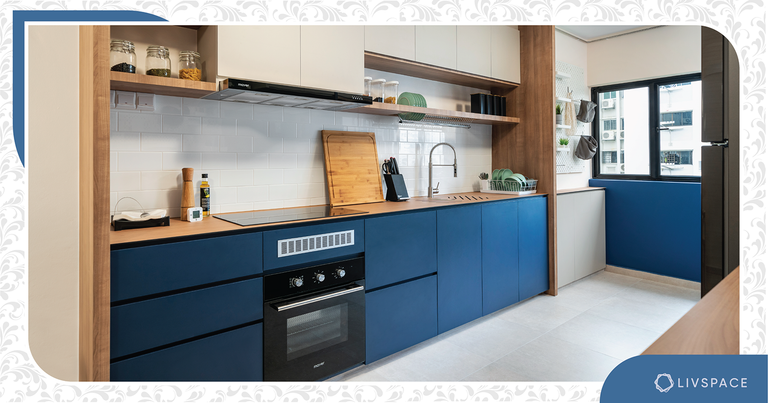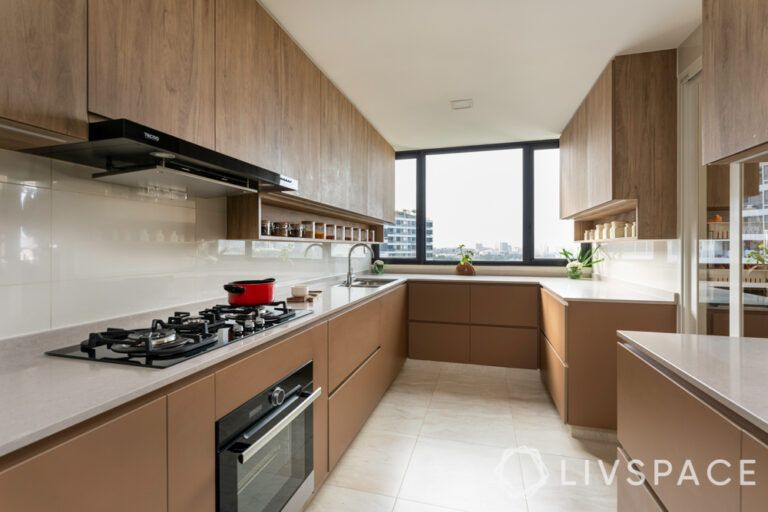How Do You Plan Kitchen Cabinets? 5 Quick Tips to Maximize Your Space.
How should you plan kitchen cabinets? Well, it’s not as easy as it looks. Before starting, do a little research on your style preferences and your budget.
The kitchen is where most of the family gathers to eat and cook together. It’s a place that needs to be functional, but also beautiful and comforting. If you’re looking for advice on how to make your kitchen work for you, read on for some helpful tips.
Choose your cabinets wisely. When planning your kitchen, it’s important to take measurements of the space you have and consider what kinds of features you need your cabinets to have. You’ll want them to be tall enough so that pots or pans can sit on their lids without knocking things off the shelves below them.
You’ll also want shelves that are long enough so that items can easily reach from one side of the cabinet to the other without having to lean over a counter-top or step up on a stool.

What Are Kitchen Cabinets?
A cabinet is a storage space that has doors and shelves on the inside. These cabinets are often used to hold kitchen utensils, dishes, food items and more. They can be made of wood, metal or plastic and come in many different shapes and sizes.
Measure your kitchen before building your cabinets. When deciding on the dimensions of your cabinets, it’s important to know where everything will go before you order them. It’s difficult to put together a set of cabinets that fit well when they arrive if they aren’t going to fit into the space you have available.
You’ll want to measure the height of your countertops, where your appliances will be placed, how deep your drawers will be and how much storage you need for each drawer and area of the cabinet. If you’re not sure what kind of size you’ll need for your kitchen at home, ask a professional who specializes in building kitchens for advice on what options to consider for size and style
If you’re still unsure about what size suits your needs best or if there are any features that you don’t see listed in this article, contact a professional who specializes in building kitchens for help with creating a customized design that works well with your space!
How to Maximize Your Space
To maximize your kitchen space, you’ll want to make sure that your cabinets have plenty of drawers. This is a great option for storage because you can use the drawers to store things such as pots and pans. It also helps with the organization process because it’s easier to see what you have stored in each drawer.
You can even use dividers in the drawer to make more space available for different types of things, such as separating utensils from dishware or storing fruits and vegetables away from cooking ingredients.
Another way that you can maximize your space in your kitchen is by installing an under-counter refrigerator. This will give you extra room on the counters so that you don’t have to squeeze everything into a small area. That said, be careful not to install too many appliances in one area or else it will be harder for people to find what they need.

The Basics of Kitchen Design
Be aware of what you’re cooking. When you cook, you’ll want to know that the space your kitchen cabinets will be in is well-ventilated and has a hood to keep things from catching on fire. You’ll also want to make sure that there is enough room for your appliances and pots or pans. Your cabinet design should accommodate all of these things, but it’s important to remember that not all designs are created equal.
Consider how the design will change with time. If you’re looking for something timeless, then a white kitchen might be perfect for you. However, if you want your kitchen to change with the seasons or have different colors throughout, then wood or other natural materials could be in order. Wood can also come in different finishes to suit your tastes.
Keep it organized! Organization is key in any kitchen design, but especially so when there are limited storage options available like those found in small kitchens. Make sure that everything has its place and that they’re accessible easily so that cooking doesn’t become a chore.
1) Kitchen Design Tips
5) Keep an eye out for unique pieces of furniture and accessories like copper pots and colorful tupperware containers. These unique items can really help boost the overall look of your kitchen!
Tips for a Functional Kitchen.
1) Keep your counter-tops clear. Don’t clutter up your counters with decorative items like bowls and vases. You’ll end up losing that precious counter space, which is hard to come by in a kitchen.
2) Don’t go overboard on colors or prints. Stick to one or two colors for the whole kitchen, such as white cabinets with black borders and knobs, or dark wood cabinets with light-colored handles.
3) Match the flooring to your cabinets. If you’re planning on using tile as your flooring, use the same color as your cabinets to make it cohesive.
4) Make sure there’s sufficient cabinet space for your cookware and appliances. Generally, this means that you should have about two inches of clearance between the back of the stove and any wall behind it. Limit cutouts in the cabinet doors so that they don’t serve as an entry point for dust bunnies and when you close them they won’t slam into anything else!
5) Consider additional storage options like pull-out shelves or pantries if you have room in your plans for them. They’ll open up more space in a small kitchen so that you can store more things within reach during meal prep time!
Most efficient way to plan kitchen cabinets
If you’re looking for a way to maximize your space, try plan kitchen cabinets vertically rather than horizontally. This will allow you to maximize the height of each shelf and make the most out of your storage potential.
2) Consider the layout of your kitchen. One important aspect to consider when you want to plan kitchen cabinets. For example, if you have a small kitchen with limited counter-space, it might not be worth investing in lots of cabinets because they will just take up too much room. You need to consider what kinds of features you want in your kitchen and then plan accordingly.
3) Plan for future growth and expansion. Make sure that you are planning for future growth and expansion before buying any furniture or appliances for your home. Depending on how much room you have, purchasing storage items like shelves or additional cabinets can also help maximize space.

What are the best features to consider when you want to plan kitchen cabinets?
2) Install the cabinets with a method that suits your needs. If you have a complete floor space, consider installing cabinets along the wall of your room. This will give you more storage and prevent items from rolling when someone opens a door. It will also maximize your space and make it easier for things to fit under the cabinets.
If you don’t have enough floor space for this option, consider installing them in a grid pattern on the floor or along the wall. This will help save some space and make it easier to maneuver around your kitchen during cooking time.
3) Consider how big of an island you want to install in your kitchen or where your sink should be located before moving forward with cabinet installation. It’s important to know what size sink you want so that you can make sure there is adequate room for it once installed inside of your cabinet doors.
4) Keep an eye out for smaller, unused spaces within your kitchen design and fill them up with shelves or drawers where possible. You’ll find that using these spaces helps keep things tidy and organized while saving on valuable floor space as well.
5) Consider adding pull-out pantries or shelving units if they’ll make moving around less chaotic during meal prep times.
Consider cabinet proportion, and scale it to your space
2) Keep a design that works on the whole kitchen in mind. If you’re working with a small space, keep it simple. A kitchen that is too busy or cluttered can quickly become overwhelming.
3) Have at least one cabinet for every item in your kitchen. Having all of your items in one location, like a pantry or spice rack, makes it easy to find what you need, and also keeps your cabinets tidy and organized.
4) Consider how much natural light enters your kitchen so that you can plan accordingly. If you’re going for an island layout, make sure that there’s enough natural light streaming into the room so that cooking doesn’t feel like an ordeal when the sun sets or rises.
Factor in appliances
If you are planning to buy appliances, it’s important to factor them in as part of your design. A refrigerator, for example, can interfere with access to the upper cabinets because it will be in the way when opening them. But if you don’t have room for a refrigerator, try and find a spot that will work for one.
2) Consider cabinet layout. When it comes to designing your kitchen cabinets, you should decide how they will be laid out. Will they all open on one side and close on the other? Will they open from both sides? If so, which one is more convenient for cooking? You’ll need to decide these things before shopping because there is no going back once your cabinets have been built.
3) Use hidden storage space wisely. One way to maximize space in your kitchen is by designing around hidden storage spaces like those found under a counter or behind a cabinet door. These types of spaces are often overlooked until someone gets creative and finds ways to use them effectively for storing items like mugs or towels.
Summary
Keep in mind that your cabinets should complement the color scheme of your kitchen and that you’ll be able to find a variety of styles to fit your needs. Also, consider the decorative elements you’d like for your kitchen, such as granite countertops or tile backsplashes.
Image Source: LivSpace
Read More: Re-Inspired Kitchen